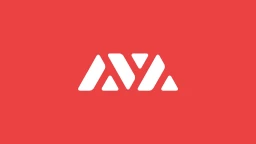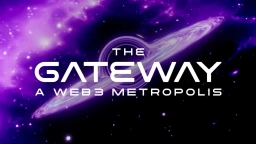NFT token-gating : How will it change the digital world?

If you’re wondering what token-gating means and how it can impact the future of digital assets, we’ve got you covered. Let’s break down what NFT token-gating is, how it works, as well as its benefits and drawbacks.
What is NFT token-gating?
NFT token-gating refers to the practice of restricting access to NFTs using tokens.
In other words, only those who hold a specific type or amount of cryptocurrency, or a token can access and purchase certain NFTs or enter a specific community. This creates an exclusive market for these digital assets, as they are only available to a select group of individuals.
The purpose behind NFT token-gating is to create scarcity and increase demand for certain NFTs. By limiting supply in this way, creators can potentially earn more money from their digital creations.
Token-gated NFT platforms are offering artists and creators a different way to monetize their work. However, this approach has its own set of drawbacks which we’ll look at later.
NFT token-gating represents an interesting development in the world of blockchain-based art and collectibles that could change how creators sell their work online.
How does it work?
NFT token-gating is a process that enables creators and collectors to control access to their NFTs. This means that only those who have met certain criteria, such as owning a specific token or being part of a particular community, can view or purchase assets or have access to exclusive events.
The gatekeeping process is carried out through smart contracts which are programmed with rules for accessing the NFT. These rules might include holding a minimum number of tokens in your wallet.
Once these conditions are met, the smart contract automatically grants access to the NFT.
The benefits of NFT token-gating
NFT token-gating enables creators to retain control over their content by ensuring that only genuine collectors can access it. By creating scarcity around their work, artists can command higher prices and ensure that their creations remain exclusive.
NFT token-gating provides an additional revenue stream for creators beyond traditional sales channels. By selling access tokens directly to collectors, artists can earn ongoing royalties from the use of their work.
NFT token-gating allows creators to build stronger relationships with their most loyal fans and supporters. Collectors who purchase access tokens become part of a select group with privileged access to exclusive content, rewards, and experiences.
NFT token-gating promotes transparency in the art world by providing verifiable proof of ownership and provenance for each piece of digital art. This helps prevent fraud and ensures that artists receive fair compensation for their work.
NFT token-gating offers numerous advantages for both creators and collectors alike. As blockchain technology continues to evolve and new use cases emerge, we can expect more innovative applications to make use of this tool.
The drawbacks of NFT token-gating
One of the main disadvantages is that it could potentially limit the audience for an NFT. Token-gating makes it more difficult for casual fans or those who may not have sufficient funds to access digital art and other unique items. This can lead to decreased exposure and interest in an artist’s work.
Another potential drawback is that token-gated content can hinder artistic expression by limiting accessibility. It can create a barrier between artists and their audience by making their work exclusive only to those who possess specific tokens.
How to use NFT token-gating
The first step in using NFT token-gating is to create an NFT. This involves creating a unique digital asset and minting it as an NFT on a blockchain platform such as Ethereum or Binance Smart Chain.
Once you have created your NFT, you will need to set up your token-gate. This involves setting up a smart contract that controls access to your content based on ownership of specific tokens.
To use this feature effectively, you should decide which tokens will grant access to your content. You may choose popular ERC-20 tokens such as ETH or DAI, or you may create your own custom token specifically for this purpose.
When someone wants access to your content, they will need to hold the required tokens in their wallet before they can interact with it. Once they have fulfilled this requirement, they can enjoy whatever benefits come with accessing the gated content.
It’s essential always to keep track of who owns what tokens so that you can manage access effectively over time. These gatekeeping features are implemented across various platforms such as Twitter, Etsy and others.
One such example is Discord. The token-gated portal restricts access to private communication channels. You can access them by logging in, connecting the crypto wallet and owning the required tokens.
As soon as the user connects to their crypto wallet, web3 tools will verify if the user has the required token in their wallet. Access to Discord changes will be provided based on the type of token a user hold.
Check-out news on Google combines Art with AI to create Games
Conclusion
With NFTs, creators can create exclusive content for their loyal fans and generate revenue from it while retaining ownership of their work.
Token gating allows creators to monetize their work in a fair and transparent way while also providing additional value and exclusivity to their most loyal followers.
As the world continues to move towards more decentralized systems powered by blockchain technology, we can expect NFT token-gating to become increasingly popular among artists, musicians, writers and other creative professionals looking for new ways of generating income from their digital creations.









